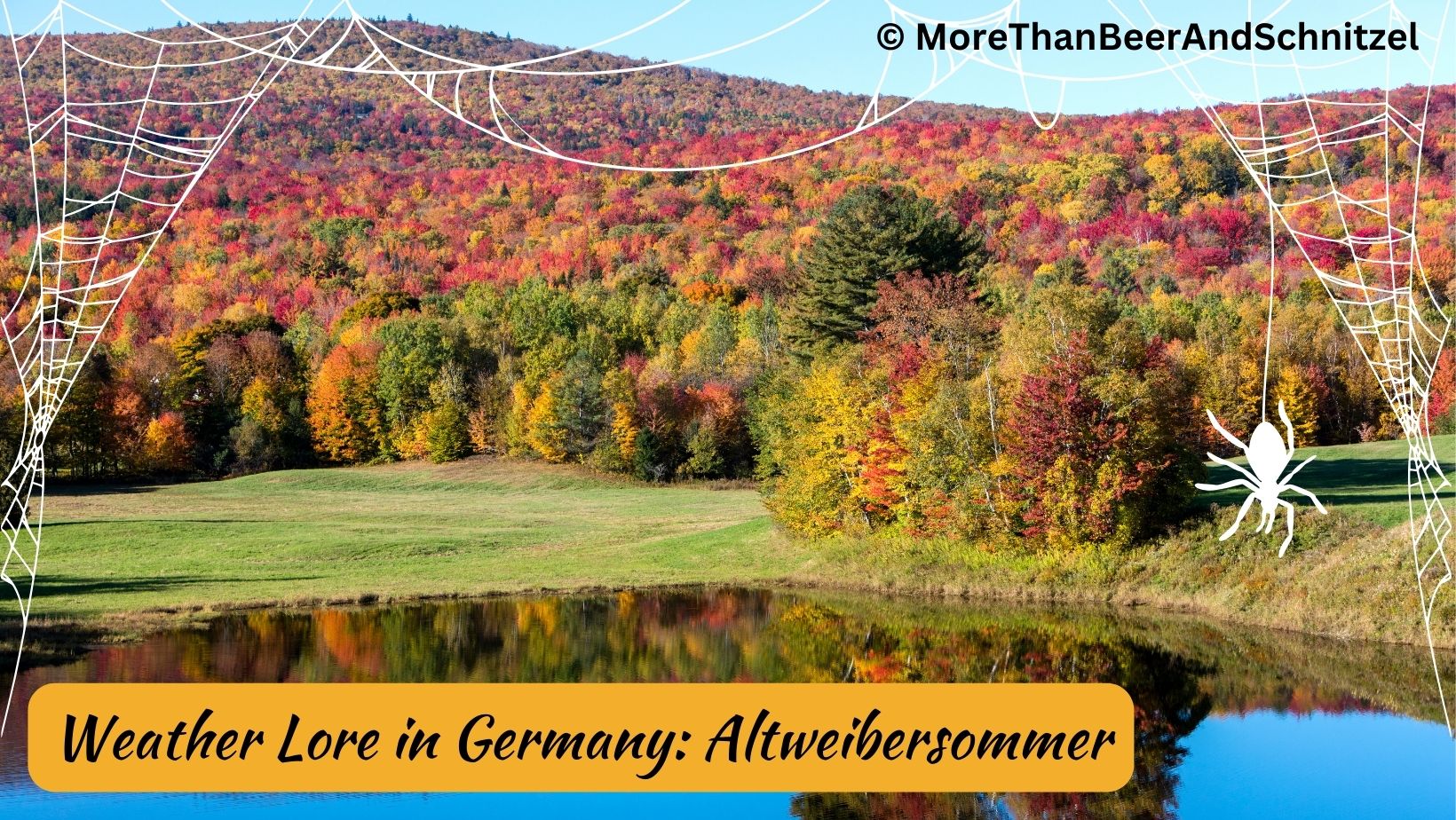Similar to the Eisheiligen or Schafskälte, Altweibersommer (Indian Summer) in Germany falls into the category of meteorological singularities. Singularities are weather phenomenons which differ from the usual, expected weather in, for example, temperature or precipitation. But while they are the exception in the usual weather patterns, they are occurring on a regular basis; they are regular exceptions so to speak.
Altweibersommer
When we are talking about Altweibersommer (lit. old women’s summer), we mean the unseasonably warm weather in fall in temperate regions of the Northern hemisphere. The term, in English “Indian Summer”, normally refers to a warm dry weather spell from September until November. Along with the warmer weather, you’ll see colorful foliage (Laubfärbung). Some people might not call it a true Indian Summer unless there was some frost before the warm spell.

What's in a name?
But why would Germans call this type of weather after old women (alte Weiber)? There are a couple of theories and hypotheses how the warm weather spell in fall ended up with this name. While Altweibersommer might nowadays be the most common term, it’s far from the only name used in German-speaking regions.
Hair, Silk, Strands
During fall, young Baldachinspinnen (hammock spider) start spinning their webs or rather try to disperse through ballooning or kiting (Spinnenflug) where they let the air catch their threads and by that be carried several meters. These spider silks were said to be gossamer of fairies, dwarves, or the Norns who weave the fate of all humans.

The strands reminded people of the gray hair of older women, hence the name Altweibersommer, or they were likened to the hair of girls which explains the expression common in before the 19th century: Mädchensommer (girls’ summer).
Terms like Marienhaar, Mariengarn, Marienfaden, and Marienseide (Mary’s hair, thread, strand, silk) refer to the virgin Mary. There was a belief that she and 11,000 virgins spun silk in fall and covered earth with it. Another theory for these names are that the silvery strings came from the robe Mary wore when she ascended to heaven.
Whether the gossamer reminded people of old women’s hair, girls’ hair, or Mary’s hair or silk, catching these spiderwebs on your clothes was considered good luck. Should a woman catch some silky strings in her hair, it meant she was getting married soon.


Second Summer
The summery weather in fall can also be likened to a second youth of older people, like alte Weiber (old women). It is short and doesn’t really go along with nature. Regional names like Witwensommer and Ähnlsummer (Bavarian for grandfather summer) would also fall into this explanation.
Side note on the word Weib: The German word nowadays for ‘woman’ is Frau. Frau, from Middle High vruowe, used to be the term for upper class women only. Women of lower social standing were called Weiber. In modern times, the word Weib was used for woman and wife; with the latter related to the Middle High German word wīp. However, Weib is not commonly used anymore, and if it is it’s a derogatory term for a woman, comparable to “broad” in American English. So don’t use it.
If you are wondering if you can still use the term Altweibersommer, the answer is yes. In 1989, a court decided that the word doesn’t violate the rights of older women.
Weiben - Weben - Weaving
The expression Altweibersommer might not have anything to do with Weiber, but rather come from the verb weiben, an old word for weben meaning to weave.

Other Names
There are other regional names for the warm hazy weather in autumn, Nachsommer (after summer), Martinssommer, Michaelssommer, and Allerheiligensommer (among others). The latter refer to Feast Days of Christian saints: September 29 is Michael’s Day, Allerheiligen (All Saints Day) is on November 1, and Martini (St. Martin’s Day) is on November 11.

Sources and Resources
- Wiki – dt
- Youtube Video – ARTE
- “Altweibersommer” von Maria Ebner-Eschenbach, 1909
- “Altweibersommer” (2020), Movie


